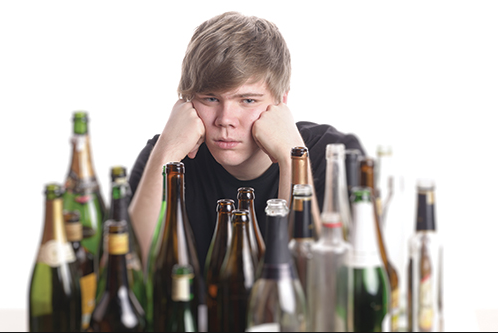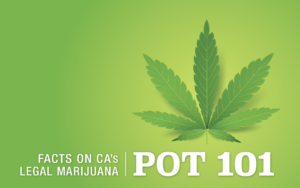
If your ABC license permits minors in your business, or if your business is a place where minors try to sneak inside, this post may be the most important one you ever read here.
Sounds dramatic? Sure. But, it’s also true. Let me prove it to you…
PROOF #1 – The Human Risk
Perhaps the first evidence I offer you should be about how serving a minor might result in financial ruin. But I don’t think so. People I know, including my clients, value self-respect more than financial success. They make doing the right thing a core principle of their life.
Some might say not selling alcohol to minor is the socially responsible thing to do. And while that’s true, my experience suggests it much more personal than that.
In the last years of owning and operating the Shark Club, University of California Irvine fraternities bussed hundreds of students to the club for a special college promotional event. The night was a huge success, and it seemed all went smoothly.
It hadn’t.
The next morning my manager, Heather, called me crying. She‘d taken a morning call and heard that one of the students, Ralph Nunez, left the club, walked half a mile to a freeway ramp, ran across the freeway, jumped the middle divider, and was hit by a vehicle. He died from his injuries.
Immediately, the ABC visited the club and investigated. Ralph could neither be seen entering the 21-and-older entrance nor seen on any video.
New stories quickly came out that Ralph was consuming jungle juice (a concoction of several liquors/liqueurs) on the bus.
The timing of when the bus arrived and how long it took customers to get in (massive lines from busses arriving at same time), and knowing when the tragedy occurred, made it unlikely Ralph got in. Yet, his friends said he did, for a short time. They also said he didn’t get alcohol inside the club.
After my club was initially named in a lawsuit, lawyers for Ralph’s family discovered the many safeguards we had in place to prevent a minor from getting alcohol, or even being in the vicinity of alcohol. As a result, we were removed as defendants from the complaint.
I had to go to the California Highway Patrol office to obtain the medical report for the insurance company. I regret reading the report. The information included the injuries Ralph suffered and the toxicology report. His alcohol blood alcohol content was extremely high and he had multiple drugs in his system.
The Shark Club staff couldn’t remember seeing Ralph that night. Still, I will always wonder if any of our outstanding staff members saw him walk away in a noticeably impaired manner and didn’t engage Ralph.
If I knew our business served alcohol to Ralph, or ignored his impairment, my life would be diminished. As it is, I frequently think about him.
Tragedies involving youth are particularly sad and haunting.
The reason California has a dram shop law that holds licensees civilly liable for serving obviously intoxicated minors is the same reason the ABC runs the Minor Decoy program year-round: the California legislature and State government have long recognized that minors are at a significantly higher risk of harm when exposed to alcohol.
A few statistics demonstrate the higher risk of harm for minors:
- Car crashes are the leading cause of death for teens and one out of three of those is alcohol related. (NHTSA, 2009)
- In the United States, the crash rate per mile driven for 16-19-year-olds is four times the risk for older drivers. (Insurance Institute for Highway Safety, 2009)
- Relative fatal crash risk for drinking drivers with a BAC at or above 0.15% ranged from 382 for drivers age 35 and over, to 15,560 for male drivers under 21. (Zador et al, 2000)
Let me be very clear about that last statistic: a minor with BAC at or above .15% is 15,560 times more likely to die in a fatal vehicle accident than a sober person.
Minors simply do not have the same life experience, driving expertise, and judgment as an adult. In addition, the still-developing brain of minors results in thrill seeking, riskier behavior and significantly more alcohol-involved tragedies.
PROOF #2 – The Financial Risk
As mentioned above, California’s dram shop law allows for civil liability if you sell alcohol to an obviously intoxicated minor and that minor injures or kills somebody else.
Please click on either, or both, of these links, before continuing to read:
https://www.pe.com/2015/06/21/riverside-jury-awards-40-million-in-tgi-fridays-stabbing/
http://www.thecalifornian.com/story/news/2017/07/26/salinas-restaurants-sued-after-20-year-old-dies-dui-crash/509806001/
The first link chronicles a $40 million jury award against a Riverside TGI Friday’s. The jury found the restaurant owner was 55 percent responsible for the death of a customer. In a nutshell, the bartender served a minor, and over served that minor, who then stabbed and killed another customer.
The second link described a recent lawsuit against a Salinas restaurant for serving a minor who then died in a car crash.
Both cases expose the financial vulnerability of California alcohol businesses if a minor is served alcohol, and injuries follow. If injuries occur, assume the ABC will find out…
When a minor is served alcohol, becomes intoxicated, and injuries themself or another person, law enforcement will connect it back to your business through the Target Responsibility for Alcohol-Connected Emergencies (TRACE) program. In this program, law enforcement investigates the source of alcohol in any incident (crash, alcohol poisoning, etc.) involving a minor and alcohol. The goal is to hold the source–whether it be a store, bar, or an individual–legally responsible for the harm.
The Salinas lawsuit referenced above occurred after a TRACE investigation:
https://www.abc.ca.gov/press/PR2018/PR18-2.pdf
PROOF #3 – The Liquor License Risk
The most well-funded ABC enforcement action, by far, is the Minor Decoy program. While typically run by ABC agents, it is also run by local police (usually the result of receiving an ABC GAP grant), and jointly by the police and ABC agents.
If your business gets in trouble with the ABC, it’s very likely the result of a Minor Decoy sting operation.
While your first violation typically results in a suspended license or payment of a fine, it’s the cumulative impact of multiple violations that is most concerning. And after one violation your business will have caught the attention of the ABC, so you should expect more undercover operations, increasing your risk of a second violation. Three violations for selling to a minor in three years and your license is revoked.
Here’s a link to ABC press release on the revocation of a Canoga Park restaurant for receiving three violations for serving to a minor:
https://www.abc.ca.gov/press/PR2016/PR16-31.pdf
Next post we’ll discuss how to protect your business against serving alcohol to a minor.


